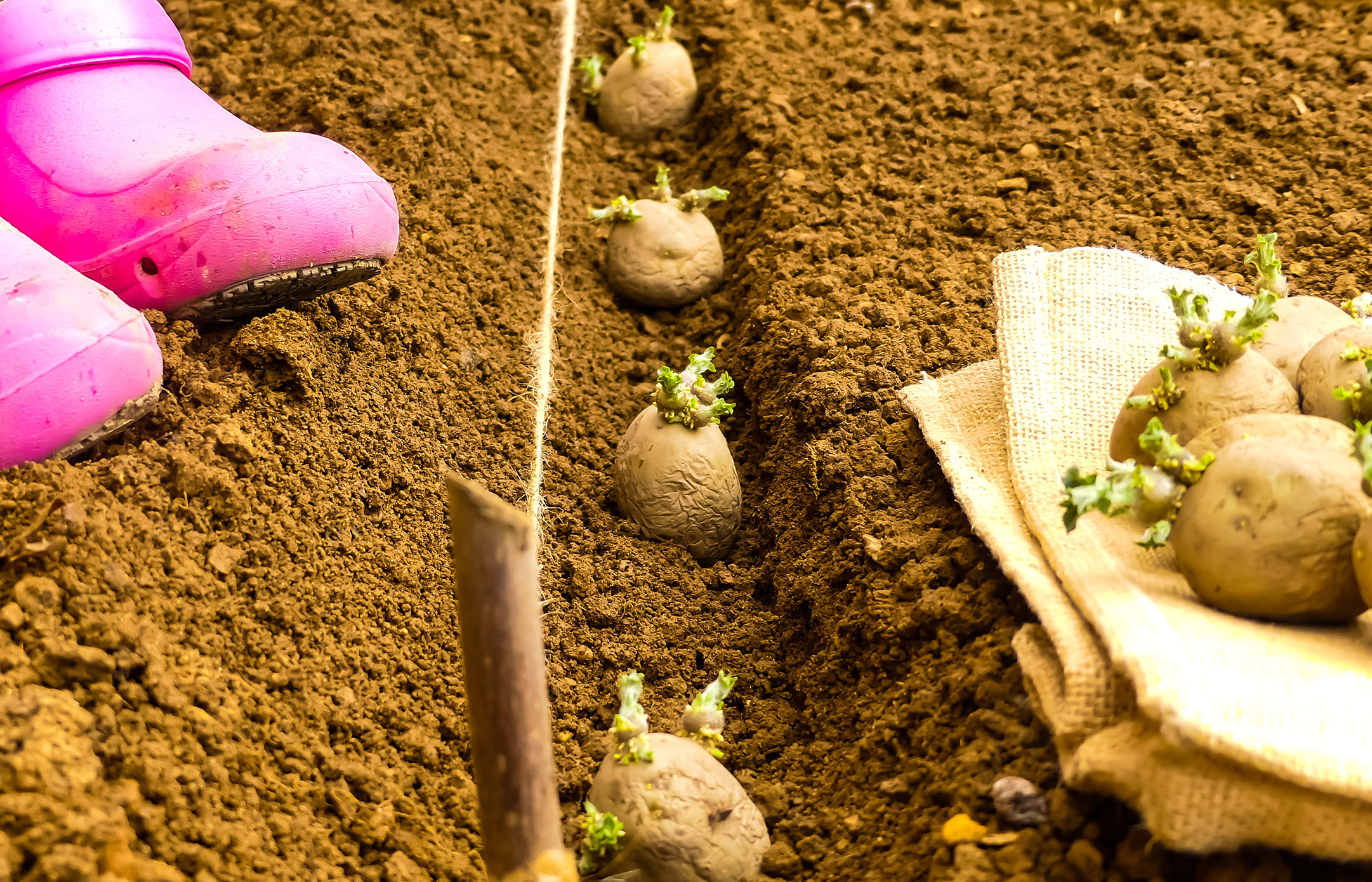Organic Seed Potato Growing Guide

Upon Arrival
If you are not planting the potatoes right away, take them out of their bag and place in a cool dark place (40-55 degrees.) If you are planting now, put the potatoes in a warm area to initiate growth.
Soil Preparation
Potatoes prefer a well-worked soil with plenty of organic matter. A light and loose loam soil with good water retention is ideal. Luckily, potatoes are quite hardy and adapt well to many different soil types. If you do not have compost or well composted manure available, a well-balanced organic fertilizer can be used sparingly. Too much nitrogen will produce large vines and small or late potatoes.
Planting
Larger tubers can be cut into egg sized pieces. Make sure that each cut piece has at least two “eyes”. Cut pieces can be left to callous for several days to help prevent rot in wet soils. Smaller tubers should be planted whole. You may want to plant seed potatoes whole if you have problems with wireworms, maggots, or other pests that are attracted to the freshly cut potatoes. Generally, smaller pieces and wider spacing will give fewer but larger potatoes whereas larger pieces and closer planting will give more but smaller potatoes.
Generally 1 pound of seed will yield 5-10 pounds of potatoes.
Dig a shallow trench about 6-8 inches deep. This can be done with a rake in loose soil but you may need a shovel or hoe in heavier soils. Place cut potatoes 10-12 inches apart in the trench. If larger potatoes are planted whole they will produce larger plants and should be given a little extra room, 12-16 inches. A spacing of 36 inches between rows is adequate but if you have the extra space, further spacing will make hilling easier. Fingerling and other small potatoes can be planted closer, but no less than 8 inches between plants. Cover the plants with about 3-4 inches of soil, leaving the trench partially filled.
Sprouts from seed potatoes should emerge in 2 to 3 weeks depending on soil temperature.
Hilling
When your potatoes reach about 8-10 inches high, bring soil up around the vines from both sides. This can be done with a rake in loose soils. If your soil is hard, you may need to cultivate the soil before raking or use a hoe. Make sure not to cultivate too closely to the young plants as to not disturb the new roots systems. Hilling is crucial because it brings loose soil around the vines where the potatoes will form, as well as allowing the roots to expand into cooler soil. With the first hilling we like to cover the vines up so that only the top leaves are exposed. This allows for a shallower second hilling done 2-3 weeks later with an additional 2-4 in of soil brought around the vines. Mulch can be applied after or instead of a second hilling.
Harvest
Potatoes are ready to harvest when their vines die back and they lose most of their color. This can occur with a frost or simply when they have reached full maturity. We like to mow the vines a few weeks before harvest. This helps toughen the skins for good storage. Potatoes can be left in the ground for several frosts, but should be harvested before the danger of a heavy frost that could damage the tubers lying closest to the surface. Harvest with a shovel or fork by digging from both sides of the hilled potatoes. Potatoes store best in a cool dark place (34-40 degrees). Use netted rope, burlap sacks, crates or open boxes for storage.
Approximate Seed Needed
(assumes 2 ounces/seed piece)
1 lb will plant 5-8 ft with 12” spacing between seed pieces (or whole potatoes) in the row
